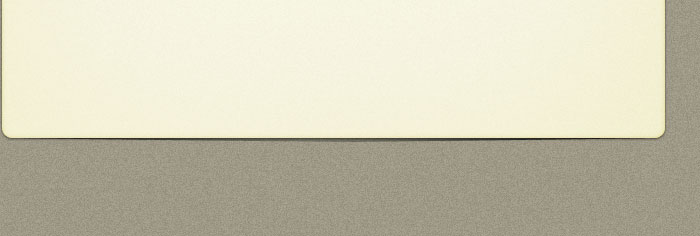ALL ABOUT GUNS DICTIONARY-B
Back action sidelock -- A sidelock mechanism that has its mainspring located to the rear of the lockplate’s other parts, such as the tumbler and sear. -- Aug. 21, 2013
Ballistite -- Early smokeless powder invented in 1888 by Alfred Nobel consisting of a mixture of nitrocellulose and nitroglycerin. -- June 5, 2013
Bar action sidelock -- A sidelock mechanism that has its mainspring located forward of the lockplate’s other parts, such as the tumbler and sear. Bar action sidelocks generally require a shallow cutout in the action body just to the rear of the knuckle to accommodate the mainspring. -- Aug. 21, 2013
Barrel -- As applied to firearms, the metal tube that the projectile is fired out of. Normally made of steel in a straight, cylindrical shape, gun barrels have been manufactured in triangular, octagonal and other shapes. Wrought iron, brass, bronze and composites of steel wrapped in fiberglass, graphite or carbon fiber are some of the materials that have been used to make gun barrels. Rifled barrels have spiral grooves in their interior that impart a spin to the projectile, greatly increasing accuracy as compared to smoothbore barrels. -- Nov. 1, 2012
Battery cup primer -- A type of primer that is normally used in shotgun shells but is sometimes used with muzzleloading firearms. Battery cup primers are much larger than most primers used in sporting cartridges and consist of the anvil, priming compound and primer cup. -- August 20, 2017*
Belt -- As applied to modern ammunition, a small, raised area located immediately ahead of the extractor groove of a metallic cartridge case. The belt circumnavigates and is larger in diameter than the case body. Many magnum rifle cartridges such as the 300 H&H Magnum and 300 Weatherby Magnum have belts. Belts were originally meant to provide a reliable means of headspacing a cartridge but with the exception of the 450 Marlin, are rarely used in the latest cartridge designs. Although most belted cartridges are meant to be used in rifles, a notable exception is the experimental 19.5mm brass shotgun round developed by Olin for the H&K CAW (Close Assault Weapon). A photo of this experimental round can be seen in 1993 Gun Digest, pg. 109. -- April 9, 2014
Belt -- Ammunition feeding device normally used with belt-fed machineguns. Belts are normally made of cloth or metal and are usually either of the disintegrating or nondistintegrating type. Distintegrating belts are normally made up of individual links that hold one round each before firing but fall away after the round is fired and ejected from the machinegun. Nondisintegrating belts consist of one piece of cloth or metal that the individual rounds are inserted into and stay in one piece after the round is fired and ejected. -- January 4, 2016*
Black alder -- A type of wood that has traditionally been used to create charcoal that is used in the manufacture of black powder. As documented in The Chemistry of Powder & Explosives, pg. 34 by Tenney L. Davis, black alder charcoal is one of the preferred ingredients when manufacturing slow burning black powder or fuze powder. -- January 20, 2015
Black powder -- Explosive mixture used as a propellant in firearms. One of the first formulas for blackpowder was documented by Marcus Graecus in his book Liber ignium ad comburendos hostes, most likely written in the 8th century, and was composed of 66.66% potassium nitrate, 22.22% charcoal and 11.11% sulfur. The formula for blackpowder has changed somewhat since its discovery over a thousand years ago and although there are several different recipes, the formula used by the British government in 1635, as documented in The Chemistry of Powder & Explosives, pg. 39 by Tenney L. Davis, Ph.D., was composed of 75% potassium nitrate, 12.5 % charcoal and 12.5% sulfur. -- May 13, 2013
Blowback -- A firearm that relies solely on the the mass of its bolt or slide to keep the breech closed upon firing. Blowback firearm mechanisms are usually semiautomatic and are normally chambered for low powered cartridges such as the .22 Long Rifle. However, many submachineguns, such as the World War 2 era British STEN, Swedish M45B “Carl Gustaf,” U.S. M3A1 “Grease Gun” and German MP40, along with postwar designs such as the Danish MADSEN Model 1950 and Israeli UZI submachineguns, are blowback operated and are chambered for more powerful, centerfire cartridges such as the 9mm Parabellum and .45 ACP. Upon firing, the bolt or slide resists the movement to the rear of the firearm caused by the powder burning in the cartridge case long enough to allow the bullet to exit the muzzle and have pressures drop to a safe level before ejecting the fired round. -- Sept. 11, 2013
Blue pill -- Term used in the U.S. for a cartridge loaded to higher than normal pressure that is used to certify that a firearm is safe to fire. Blue pill cartridges are not meant for sale to consumers and are normally used only by manufacturers of firearms, ballistics labs or proof houses. -- June 5, 2013
Bolt face -- The part of the bolt that directly contacts the base of a metallic cartridge. -- December 19, 2016*
Bottleneck cartridge -- A cartridge that has a neck area that is significantly smaller than the case body. Most bottleneck cartridges step down abruptly between the case body and the case neck, creating a shoulder that is normally used to control headspace. Some bottleneck designs with a more gradual taper, such as the 300 H&H Magnum, have a belt that sets headspace. The .30 WCF (aka 30-30 Winchester) cartridge, while a bottleneck design, uses the rim to set headspace. Most bottleneck cartridges are used in rifles but there are a few handgun cartridges such as the 8mm Japanese Nambu and the 357 SIG that are bottleneck designs. One of the earliest American bottleneck cartridges is the Sharps .40 Calibre 1-11/16 Inch Bottleneck, documented in Sharps Firearms, pg.338 by Frank Sellers as being listed in the April 1869 Sharps catalog. --April 9, 2014
Boxlock -- As applied to breechloading firearms, a double-barrelled shotgun or rifle action that has all of its major mechanical parts housed in the action body. The most common boxlock design is the Anson & Deeley of 1875. -- Aug. 21, 2013
Bullpup -- A firearm with a barrelled action that resides in the rear portion of the buttstock, with a trigger that is located in front of the action, usually near the midpoint of the firearm. Some of the world’s better known bullpup firearms are the Steyr AUG, HK G11, Enfield L85/SA80, FAMAS and FN F2000 assault rifles as well as the Walther WA2000 semiauto sniper’s rifle. The chief virtue of a bullpup firearm is its short overall length, despite having a standard length barrel, but it comes at the expense of increased muzzle blast experienced by the shooter because of the muzzle’s closer proximity. -- April 30, 2013
Burgess, Andrew (b. 1837 - d. 1908) -- American inventor, firearm designer and photographer. Best known as the designer of the Burgess Model 1878 lever action rifle. Also designed, in collaboration with John Marlin, the Marlin Model 1881 lever action rifle. According to The Burgess Long Range Repeating Rifle Model 1878 pg. 16-17 by Dale A. Olson, Burgess held 599 patents that pertained to guns, some of which were used in Colt, Mannlicher and Mauser firearms. Also worked for, and for a time was a partner of, the famous Civil War photographer Matthew Brady. -- May 29, 2013
Copyright August 2017 John Swikart



